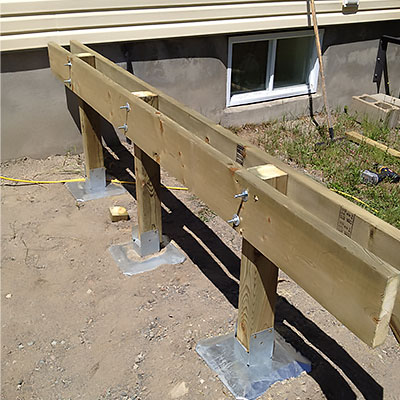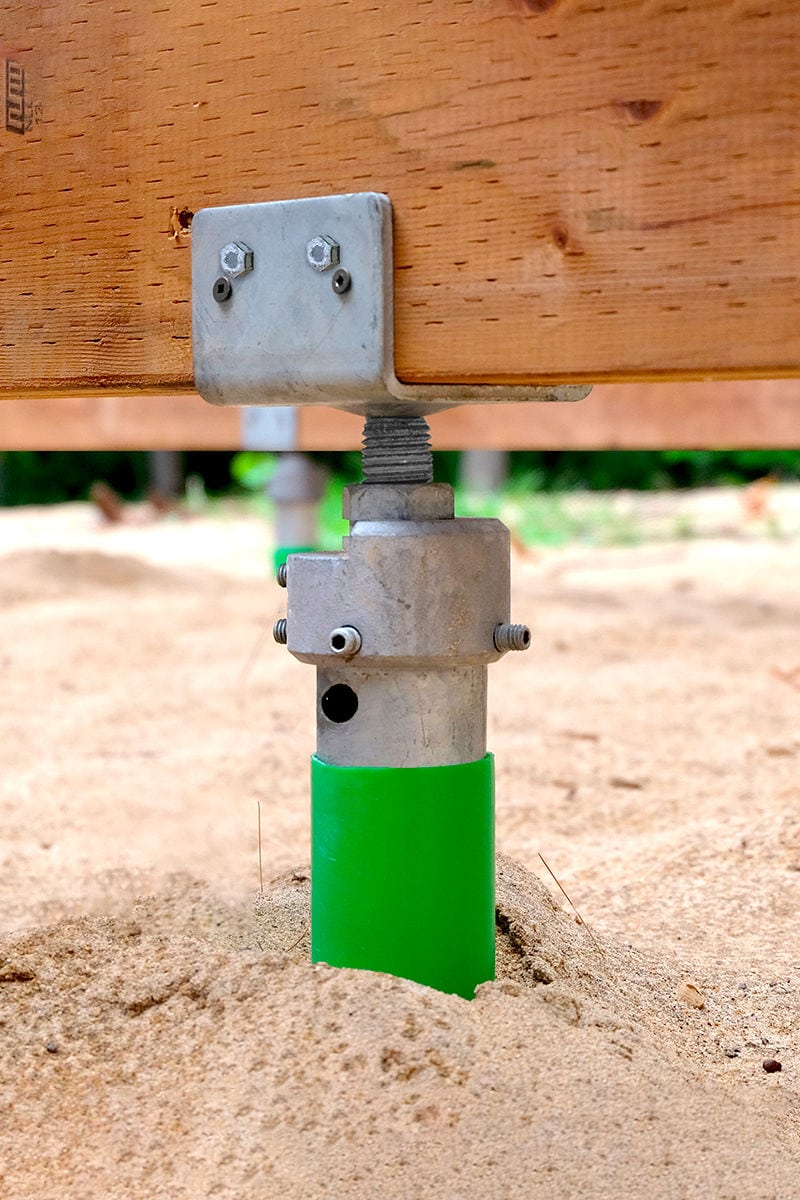Deck Footings Introduced: Recognizing the Secret Components of a Dependable Deck Framework
Deck Footings Introduced: Recognizing the Secret Components of a Dependable Deck Framework
Blog Article
Choosing the Right Deck Footings for Security and Toughness
When it involves constructing a deck, among the most vital decisions you will make is picking the best footings for stability and sturdiness. The durability and safety of your deck depend greatly on the sort of grounds you choose, as they supply the important assistance and stability to withstand the test of time. With a myriad of alternatives offered, it can be overwhelming to determine which footings are best matched for your details requirements. In this conversation, we will check out the numerous sorts of deck footings, consider the vital aspects to consider when making a decision, and explore the advantages and disadvantages of different alternatives. By the end, you will have a clearer understanding of the options at hand and be better equipped to make an informed decision for your deck job.
Kinds of Deck Footings
There are numerous sorts of deck grounds that can be utilized, each offering one-of-a-kind benefits and considerations. One typical kind of footing is the concrete pier ground. These grounds consist of a cylindrical opening full of concrete, which offers a strong foundation for the deck messages. Concrete pier grounds are fairly very easy to mount and provide superb security, making them a preferred choice for lots of deck projects.
One more kind of footing is the helical stack footing. Helical piles are steel shafts with helical plates affixed to them. These footings are mounted by screwing them right into the ground, which develops a safe and secure structure for the deck. Helical heap grounds are excellent for locations with challenging soil conditions, as they can be mounted in virtually any type of kind of soil. If required., they also allow for very easy change and progressing of the deck.
Conversely, some builders choose precast concrete grounds. These footings are made of sturdy concrete and can be found in numerous sizes and shapes to fit various deck styles. Precast concrete grounds are practical to install and supply a stable base for the deck framework.
Lastly, one more option is the post-in-anchor ground system. This type of ground involves driving a steel support into the ground and affixing it to the deck message. It supplies versatility in regards to placing the deck blog posts and appropriates for decks with lightweight structures.
When selecting the best type of deck ground, it is vital to take into consideration elements such as soil conditions, deck lots, and local building ordinance (Deck Footings). Consulting with a professional contractor or architectural designer can aid guarantee the ideal ground is chosen for a risk-free and steady deck
Elements to Take Into Consideration When Selecting Grounds
When choosing the suitable grounds for a deck, it is critical to very carefully consider different factors such as dirt problems, deck load, and adherence to local building codes. These aspects play a substantial role in guaranteeing the security and durability of the deck structure.
One of the primary aspects to take into consideration is the dirt problems. The kind of dirt on which the deck will be constructed determines the type of footings required. Decks built on loose or sandy soils may require much deeper grounds to give adequate support and prevent settling. On the various other hand, decks improved clay or large dirts might need footings that can accommodate the dirt's tendency to broaden and contract.
Another essential variable is the deck tons. The weight of the deck, including the materials utilized and any type of potential online lots such as furnishings or events, must be considered when choosing footings. The grounds need to be developed to birth the weight of the deck and disperse it evenly to avoid any type of structural concerns or failures.
Lastly, adherence to neighborhood building ordinance is paramount. Structure codes differ from region to area, and it is vital to comply with the specific demands set by the local authorities. Deck Footings. These codes make certain that the deck is developed safely and fulfills the necessary requirements for structural honesty and load-bearing capability
Concrete Grounds: Advantages And Disadvantages

Concrete footings supply several advantages and negative aspects when used as the foundation for a deck. On the positive side, concrete footings give exceptional security and toughness.
Another benefit of concrete grounds is their adaptability. They can be poured right into different shapes and dimensions to suit various deck styles and setups. Concrete footings can be personalized to fit the details requirements and needs of the deck framework.
However, there are likewise some downsides to making use of concrete grounds. One significant drawback is the cost and labor included in their setup. Concrete footings require excavation and typically need the support of hefty machinery. This can boost the general expense of the deck job and may call for expert aid.

Helical Piers Vs. Sonotubes: Which Is Better?
In thinking about the foundation options for a deck, the comparison between helical piers and sonotubes is crucial in establishing the premium option. They are twisted right into the ground making use of hydraulic machinery, giving a stable and sturdy foundation for the deck.
The helical plates on the piers develop a strong grasp with the soil, shifting or stopping any motion of the deck. Sonotubes, on the various other hand, count exclusively on the concrete filling for security, which may not use the exact same degree of strength and resistance.
In regards to setup, helical piers are reasonably simpler and faster to mount compared to sonotubes. The hydraulic equipment utilized to twist the piers into the ground guarantees a quick and effective process. Sonotubes, on the various other hand, need excavating openings and pouring concrete, which can be taxing and labor-intensive.
Furthermore, helical piers are an even more versatile choice. They can be made use of in various more dirt conditions and can be readjusted or reinforced if needed. Sonotubes, on the various other hand, might call for additional support, such as rebar, in specific soil problems or locations with high lots requirements.
Selecting the Right Footings for Your Deck's Dimensions
For ideal architectural honesty, it is vital to meticulously pick the appropriate grounds that line up with the measurements of your deck. The measurements of your deck, including its height, size, and size, play a significant role in establishing the kind and dimension of grounds needed.
When choosing footings for your deck, it is very important to think about the load-bearing capability of the soil. The weight of the deck, combined with the weight of any furniture or individuals on it, applies a significant force on the footings (Deck Footings). For that reason, it is important to choose footings that can properly support this weight without moving or sinking in time.
Larger decks with better dimensions need bigger grounds to supply sufficient security and assistance. The form of the footings, whether they are round or square, depends about his on the design and layout of the deck.
Final Thought
Finally, picking the best deck grounds is important for guaranteeing security and longevity. Aspects such as the kind of footings, the deck's measurements, and the benefits and drawbacks of various alternatives should be considered. Concrete footings provide toughness and long life, but might be extra costly and time-consuming to install. Helical piers and sonotubes have their own advantages and downsides. Eventually, picking the ideal grounds for your deck's particular demands is essential for a resilient and effective framework.
These grounds are composed of a round opening filled with concrete, which gives a solid foundation for the deck articles. Concrete pier grounds are fairly very easy to install and supply excellent stability, making them a prominent choice for several deck image source tasks.
Precast concrete grounds are practical to install and provide a steady base for the deck structure.
It offers versatility in terms of positioning the deck posts and is ideal for decks with light-weight structures.
Concrete grounds use several benefits and downsides when utilized as the structure for a deck.
Report this page